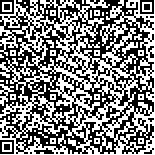| 摘要: |
| [摘要] 目的 探讨治疗儿童及青少年抑郁症的有效方法。方法 采用开放式的随机对照研究(RCT)方法将符合抑郁症诊断标准(年龄在12~18岁)的儿童及青少年患者122例,随机分为治疗组42例[认知行为治疗(CBT)+氟西汀治疗];单纯CBT治疗组43例和单纯氟西汀治疗组37例。在治疗前和治疗后应用全面功能评估量表(GAF)、全面关系功能评估量表(GARF)、临床全面印象量表(CGI-S)进行评估;在治疗前和治疗第2、第4、第6、第8、第12周应用汉密尔顿抑郁量表(HRSD)、抑郁情绪温度计(T-S)和暴躁情绪温度计(T-I)进行评估,以判断疗效。结果 三组的HRSD、T-I、T-S评分随着治疗的时间增加逐步减分,治疗前后有明显的差异(P<0.01),而三组间比较差异无统计学意义(P>0.05)。三组治疗前后的CGI、GARF、GAF评分均有明显的差异(P<0.01);而其中以CBT组的CGI、GARF、GAF评分治疗前后比较差异最为明显(P<0.01),与其他组比较差异亦有统计学意义(P<0.01)。结论 国际上通用的CBT治疗指南适用于儿童及青少年抑郁症的治疗。CBT+氟西汀治疗、单纯CBT治疗、单纯氟西汀治疗三种方法都可以有效治疗儿童及青少年抑郁症,但以CBT单纯治疗的效果更优。 |
| 关键词: 儿童及青少年抑郁症 认知行为治疗 氟西汀治疗 |
| DOI:10.3969/j.issn.1674-3806.2012.08.04 |
| 分类号:R 749.94 |
| 基金项目:广西自然科学基金资助项目(编号:桂科回0639012) |
|
| A study of the cognitive behavioral therapy combined with fluoxetine intervention for children and adolescents depression |
|
WU Xin, HUANG Ling, SHI Jie, et al.
|
|
The People′s Hospital of Guangxi Zhuang Autonomous Region, Nanning 530021, China
|
| Abstract: |
| [Abstract] Objective To study the most effective treatment for children and adolescents depression.Methods The open mode of randomized controlled study (RCT) was conducted. The children and adolescents (n=122) at the age of 12~18 years who were complied with depression diagnosis standard were divided into the 3 groups: cognitive behavioral therapy(CBT) + Fluoxetine group (n=42); CBT group (n=43) and Fluoxetine group (n=37). Before treatment and after treatment,the Global Assessment Function (GAF), the Global Assessment of Relational Functioning (GARF), Clinical Global Impression (CGI-S),and before treatment, 2nd w, 4th w, 6th w, 8th w and 12th w after the beginning of treatment, the Hamilton depression scale (HRSD), Depressed mood thermometer (T-S) and Irritable mood thermometer (T-I) were conducted to evaluate the treatment effect.Results HRSD, T-I and T-S scores of 3 groups were reducing gradually with the time of treatment were found, and before and after treatment were significantly different (P<0.01), but within the three groups were not different. Before and after treatment CGI, GARF, GAF scores of the 3 groups were significantly different (P<0.01). Before and after the treatment, CGI, GARF, GAF scores of the CBT group were significantly different with the other group (P<0.01).Conclusion The international general CBT treatment guidelines can be used for children and adolescents depression. The CBT, CBT + Fluoxetine and Fluoxetine alone could be an effective treatment for children and adolescents depression. CBT seemed to be most effective therapy for children and adolescents depression. |
| Key words: Children and adolescents depression Cognitive behavioral therapy(CBT) Fluoxetine |

